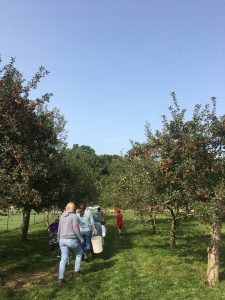For this week of my internship, I have been focusing primarily on my second continuation activity, which is concentrated on learning about solar energy. After researching various solar activities, I came across one focusing on the sun as the source of all energy and how it transmits energy to other sources. I felt that this would be a good activity to educate grade school children about energy and the many forms it takes. In addition, I included a simple continuation experiment for children to try at home to better-understand solar energy.
What are Sunbeams?
Objective: To understand the primary source of energy is the sun. To examine how energy from the sun changes and takes many forms; to understand how these forms come to us.
Background: Energy gives us the ability to perform actions such as running, playing sports, and even thinking. This is because energy is stored in our body in our muscles and brain cells. Energy allows things, and people, to move and do work and it exists in many forms, like energy that is used to light a streetlamp, cool buildings during warmer months, and cook our favorite foods.
The sun is the source of all energy, but energy can be stored in many things such as natural gas, food, coal, water, and wind. Energy does not have a shape and therefore we cannot hold it in our hands; however, energy can be changed from one form to another. When gasoline is burned in a car, the energy in gasoline is converted to heat energy. When we stand outside in the sun, light energy is changed into heat as well.
Materials:
- Paper (yellow construction paper to cut out the sun and sunbeams; OR regular paper for children to draw their own sun)
- Markers or crayons to label sunbeams
- Optional: Scissors, glue (to attach sunbeams if you choose not to draw a sun)
Procedure:
- Draw or cut out a picture of the center of the sun (a circle); label the circle ‘Energy’ and think about what kinds of energy we get from the sun.
- Make a list of all examples of energy you can come up with; the objective is to help children understand that the sun is the primary source for many different things (food, wood, oil, gas, coal, light, heat, plants, etc.) Provide a helpful explanation for less obvious examples.
- Draw or cut out several sunbeams (rectangles/strips of paper) and write an energy word from the previous list on each beam. Attach sunbeams to circle if necessary.
- Have children share their sun with each other; look for similarities or unique examples of energy. Ask children how their energy examples would be different if we had no sun, two suns, or a sun that was closer/further away.
Further Learning Experiment:

Melting Ice
Objective: To provide additional understanding of how solar energy works.
Procedure:
- Place ice cubes outside in your backyard on a sunny day. Place one cube directly in the sun and place another cube in full shade.
- Ask children which ice cube they think will melt faster.
- As the cube in the sun turns into a puddle first, explain that the heat energy from the sun made it melt faster (The light energy from the direct sunlight turns into heat energy, warming the ice cube and melting it more quickly).


